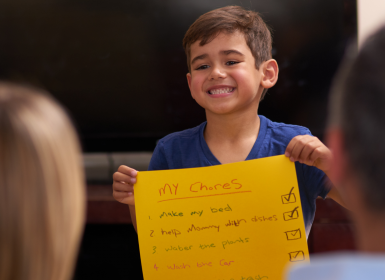What is Sensory Processing?
Sensory processing refers to the way a person sorts, interprets and responds to sensation from their body, environment and the world around them. The sensations or sensory information comes from the seven senses of touch, taste, sight, sound, smell, movement and body position.
Processing occurs in the brain and nervous system (Central Nervous System). When the brain is processing sensations accurately, the person gets a clear perception of the world and is able to make an appropriate response; for example, the goose bumps on my skin tell me it’s cold outside so I better wear a jumper or someone is talking to me, I will concentrate on what they are saying, on their facial expression and body language. The brain automatically tunes out other unimportant sensations to make concentrating possible.
How do you know anything about your world? … the answer is: through your senses.
In fact, without your senses of vision, hearing, touch, taste and smell, your brain, the organ that is responsible for your conscience experience, would be an internal prisoner in the solitary confinement of your skull.
Your world is what your senses tell you it is.
The limitations of your senses set the boundaries of your conscious existence.
Coren, S., Porac, C., & Ward.l. (1984) Sensation and Perception. Academic Press, Inc. Orlando, Florida.
Sensory processing has a huge impact on a person’s life. Life can be very difficult for the person with sensory processing difficulties.
An Overview of Sensory Processing Difficulties
Sensory processing can be viewed as the foundation to a person’s development.
In order for a child to learn about their body and their world, they must first process sensory information accurately.
The brain processes and integrates sensation which helps them form a strong foundation on which to build other higher level skills; for example, reading/writing.
Some children experience difficulty with their sensory processing.
One type of sensory processing difficulty or dysfunction a child can have is a sensory modulation difficulty. Modulation is a process involving ‘tuning in’ to what is relevant in a situation (e.g. mum talking) and tuning out what is irrelevant (e.g. the noise of the air conditioner in the background).
When a child has a modulation difficulty they find it challenging to ‘strike a balance’ with this tuning in/out process so they tend to over or under respond to their world. In other words, their responses are too big or too small and don’t seem to quite ‘fit’ the situation.
An example of a response that is too big would be a child screaming and being very distressed whenever dad mows the lawn. An example of a response that is too small would be preschooler not noticing lots of their toys on the ground and walking over rather than around them.
In general, modulation difficulties impact a child’s ability to have a ‘just right’ level of alertness so they may appear overly ‘busy’, hyper or overly lethargic. Some children fluctuate greatly between being really ‘up’ and really ‘down’ with their activity level. This can all impact on how distractible a child is. Children with modulation difficulties can have very emotional reactions to situations; for example, crying in response to being overwhelmed by sights, sounds and smells at the shopping centre.
Modulation difficulties can impact a child’s behaviour; for example, excessive tantrums or aggression in seemingly ‘unprovoked’ situations. Modulation difficulties can have a significant impact on a child’s ability to interact with others, play and participate in self care activities; for example, distress during hair washing.
One of the ways an Occupational Therapist can assess and measure how well the brain is processing sensory information is through the Sensory Profile by Winnie Dunn.
The Sensory Profile is a questionnaire that assists in gathering information about how a child processes the seven senses of touch, taste, sight, sound, smell, body position and movement. It helps to identify a child’s individual sensory personality (sensory profile) which is related to their pattern of responding.
Each person has a specific sensory personality or pattern for each of their seven senses. They also have a general/overall sensory personality.
The patterns of responding (sensory personalities) can be divided into four basic types.
Low registration
A child with this type of sensory personality often under responds to their environment and can appear not to notice things. Words that people may use to describe children with this sensory personality might include disinterested, dull/flat effect, withdrawn, ‘overly tired’, apathetic, self absorbed or ‘away with the fairies’ – a bit like Eeyore from Winnie the Pooh stories.
Sensory seeker (craves and seeks out more and more sensory experiences)
A child with this type of sensory personality tries to notice and does notice most things in their environment. They really like to ‘get into things’. They try to ‘add on extra value’ to life. Words that people may use to describe children with this sensory personality might include hyperactive, fidgety, excitable and continuously engaging. This person is a bit like Tigger from Winnie the Pooh!
Sensory sensitive
A child with this type of sensory personality tends to notice ‘too much’ and is often disturbed by sensations. Words that people may use to describe children with this sensory personality might include over sensitive, distractible, hyperactive, ‘complainer/whinger’, vigilant, rule bound, reliant on rituals, controlling, highly emotional and distressed. Some children may avoid people and situations which really bother them all together. The Rabbit character from Winnie the Pooh is a lot like this.
The Winne the Pooh character is what we all strive to be like for most of the day. Calm, attentive, a little excited when appropriate but not overly excited, able to calm down, regulate and control his own behaviour. This is a good state for playing, interacting, learning and doing the ‘every day’ things that need to be done.
Sometimes children need ‘extra’ help to get into and stay in this state.
An Occupational Therapist who specialises in sensory integration can investigate how to support a child to be calm yet alert throughout the day.
These sensory personalities help to describe outward behaviours that reflect internal brain processing, imbalances in stress and happy hormones and arousal/alertness states. So when children display the sorts of ‘behaviours’ listed above it could be because they have sensory processing (modulation) difficulties.
When observing our children’s behaviour it is always important to ask ‘Could it be sensory?’
Sensory processing and sensory modulation are complex processes. The information provided here is really just the ‘tip of the iceberg’. We encourage people to learn more if they feel it is relevant for their child.
A general tip to help the brain with sensory processing is to fill your day with physical exercise, heavy body work that involves deep pressure, pushing, pulling, lifting, moving, singing, dancing, chewing, crunching and other feel good sensations!





